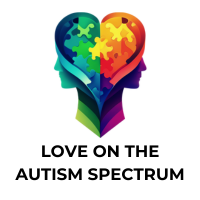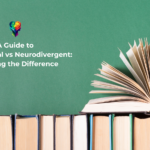Autism spectrum disorder (ASD) has long been perceived as a predominantly male condition, with males being diagnosed at a rate of approximately four times more than females. This skewed perception has contributed to a diagnostic gap for autism in women, who often face unique challenges and experiences that are not as well understood.
In this blog post, we will delve into the world of autistic women, exploring diagnostic challenges, camouflaging and social skills, the female autism phenotype, cognitive functioning, comorbidities and mental health issues, and the impact of gender and sexuality identification on autistic women’s lives. We hope to empower autistic women and create a greater understanding of their unique experiences.
By examining the differences between autistic males and females, we hope to raise awareness and understanding of the female experience of autism, ultimately contributing to improved diagnostic accuracy and more appropriate support for autistic women.
Key Takeaways
- Understanding autism in women is essential for accurate diagnosis and support due to gender differences.
- Autistic women often face diagnostic challenges; camouflaging behavior can help but also lead to negative consequences.
- Addressing the diagnostic gap through criteria modifications, raising awareness, and systematic review of interventions will improve the well-being of autistic women.
Understanding Autism in Women

Autism spectrum disorder (ASD) is a complex neurodevelopmental disorder characterized by impairments in social communication and restricted behaviors or interests, with notable gender differences in its presentation. Males are often diagnosed with ASD at a much higher rate than females, with the male-to-female ratio being around 4:1. This disparity in ASD diagnosis can be attributed to various factors, such as diagnostic biases, later diagnosis in females, and the unique ways autism manifests in women. Understanding autism spectrum conditions, including developmental disabilities like ASD and other spectrum disorders, can help improve diagnostic accuracy and support for individuals on the spectrum.
The historical focus on male subjects in autism research has undoubtedly led to a male-centric view of the disorder. Pioneering researchers like Hans Asperger and Leo Kanner focused their studies primarily on autistic males, creating a foundation for the “extreme male brain theory” of autism. This male-centric perspective has contributed to the underdiagnosis and misdiagnosis of autistic women, who may display different symptoms and traits than their male counterparts.
Diagnostic Challenges
The diagnostic challenges faced by autistic women stem from a lack of awareness and understanding of the unique ways autism may manifest in women and girls. This can result in misdiagnosis or failure to diagnose altogether. One study found evidence for a diagnostic gender bias against girls who met the criteria for ASD, with some females presenting with severe autism traits but failing to meet the criteria for a diagnosis due to the lack of sensitivity to the female phenotype.
To improve ASD screening and diagnosis in females, sex-specific thresholds may be beneficial. Autistic women often have their first medical consultation for autism approximately two years later than the total sample and three years later than males in Level 1. Overcoming these diagnostic obstacles is key to guaranteeing autistic women receive suitable support and resources adapted to their needs.
Camouflaging and Social Skills
Camouflaging is a common phenomenon among autistic women, where they may mask their symptoms by mimicking neurotypical behaviors to blend in socially. Autistic girls have a much higher chance of not being classified as having restricted/repetitive behaviors based on DSM-5 criteria. This is because they often employ camouflaging behavior to mask their impairments. The Camouflaging Autistic Traits Questionnaire (CAT-Q) categorizes social camouflaging into three parts. These are Masking, Assimilation, and Compensation.
While camouflaging can help autistic women navigate social situations, it can also have negative implications. The strenuous effort to imitate or emulate other people’s behaviors can lead to a feeling of not having or cultivating their own identity, thus heightening the danger of stress and detrimental relationships. This camouflaging behavior contributes to the underdiagnosis and misdiagnosis of autistic women, further highlighting the need for increased awareness and understanding of the female autism phenotype.
The Female Autism Phenotype

A unique manifestation of autism has been identified among women, which differs from the traditional male-based conceptualizations. This phenotype is described as a female-specific set of strengths and difficulties associated with autism. This female autism phenotype can present differently in terms of social communication, sensory sensitivities, and other autistic traits.
Grasping the distinctive characteristics and traits of autism in women is vital in bridging the diagnostic gap. Recognizing and appreciating the differences in the female autism phenotype, compared to the prevailing male-centric view of autism, can aid in providing adequate support and resources for autistic women.
Social Communication Differences
In terms of social communication abilities, autistic women generally exhibit similar deficits in social communication and interaction when compared to autistic men. However, females with ASD demonstrate a greater capacity to develop, maintain, and understand relationships and adapt their behavior to various social contexts.
Non-verbal communication problems are lower in the female group than in the male group, specifically in level 1. This suggests that autistic women may possess better social skills and relationship maintenance abilities than their male counterparts, further highlighting the unique experiences of autistic women.
Sensory Sensitivities
Autistic women can exhibit sensory sensitivities, which can present as both hypersensitivity and hyposensitivity to sensory stimuli. These sensitivities encompass:
- Sound
- Light
- Touch
- Taste
- Smell
These sensory sensitivities are a common feature of autism and can have a substantial effect on the daily lives of women with autism.
Research has indicated that females with autism may present with more pronounced sensory profile abnormalities than males. This heightened sensitivity can contribute to difficulties in social situations and overall well-being, further emphasizing the need for increased awareness and understanding of the female autism phenotype.
Cognitive Functioning and Intelligence Quotient
When comparing cognitive abilities and intelligence quotient (IQ) between autistic males and females, females demonstrate enhanced language and verbal capabilities. The mean IQ in females with ASD is 108.14, whereas the mean IQ in males with ASD is 104.14. This difference in cognitive functioning highlights the unique experiences and challenges faced by autistic women.
Comprehending the cognitive variations and sex differences between autistic males and females is instrumental in offering suitable support and resources for autistic women. Recognizing these differences can help tailor interventions and support systems to address the unique needs of autistic women better.
Language and Verbal Skills
Autistic women often display better language and verbal skills compared to their male counterparts. The Verbal Intelligence Quotient of the Wechsler Preschool and Primary Scale of Intelligence-Third Edition revealed statistically significant higher scores in females than males, particularly in level 2 (F 115.33 v. The mean score was 87.00. The p-value was 0.0108.
These differences in language and verbal abilities can impact the way autistic women navigate social situations, with many relying on their enhanced language skills to compensate for other social communication challenges. This further emphasizes the importance of recognizing and addressing the unique experiences of autistic women.
Comorbidities and Mental Health
Autistic women often experience comorbidities and mental health issues at higher rates than autistic men. Some common comorbidities in women with autism include:
- Anxiety
- Depression
- Eating disorders
- Epilepsy
- Psychiatric/behavioral complaints
- Gastrointestinal (GI) disorders
- Autistic burnout
These conditions are prevalent in autistic women and may require additional support and treatment.
Identifying and tackling these comorbidities and mental health issues is paramount in offering holistic support and resources for autistic women. By understanding the unique challenges faced by autistic women, healthcare providers, and support networks can better tailor interventions and support systems to meet their needs.
The Impact of Gender and Sexuality Identification

Autistic individuals often face unique experiences in terms of gender and sexuality identification. Studies have found a higher prevalence of gender dysphoria in the autism spectrum population, with 7.8% of patients with gender dysphoria being on the autism spectrum. Furthermore, an online survey found that 24% of gender-diverse individuals were identified as having autism.
These findings underscore the significance of comprehending and managing the influence of gender difference and sexuality identification in the lives of autistic individuals. Increased awareness and support for the diverse experiences of autistic individuals in terms of gender and sexuality identification can contribute to improved well-being and quality of life.
Support and Resources for Autistic Women

Several support and resources are available for autistic women, addressing their unique needs and experiences. Some of these organizations include:
- Aspiengirl
- Autism Empowerment
- Aspire – The Female Autism Network
- Autism Women & Nonbinary Network
- Felicity House
These organizations provide online and in-person support groups, resources, and information about autism tailored to autistic women.
By providing support and resources specifically designed for autistic women, these organizations help address this population’s unique challenges and experiences. Guaranteeing that autistic women have access to suitable support and resources is vital in enhancing their well-being and success in diverse aspects of life.
Addressing the Diagnostic Gap
Addressing the diagnostic gap for women with autism is of great importance. Here are some reasons why:
- Prompt diagnosis can enhance well-being
- Acceptance is fundamental for psychological health
- Camouflaging behaviors can lead to misdiagnosis
- It furthers research and comprehension in the field, such as the work done by the developmental disabilities monitoring network.
To improve diagnostic accuracy for autistic females, it is suggested that diagnostic criteria and tools could benefit from including specifiers and female-oriented examples. Raising awareness and understanding of the female autism phenotype allows healthcare providers and support networks to address the diagnostic gap effectively and provide suitable support and resources for autistic women. I offer Autism Assessments at the Adult Autism Assessment Center in California.
A systematic review of interventions can lead to improved well-being and quality of life for autistic women and contribute to a more inclusive and understanding society.
Summary
Throughout this blog post, we have explored the unique experiences and challenges faced by autistic women about diagnosis, camouflaging, the female autism phenotype, cognitive functioning, comorbidities and mental health issues, and the impact of gender and sexuality identification. We have also discussed the available support and resources tailored for autistic women, addressing their unique needs and experiences.
As we strive to create a more inclusive and understanding society, it is crucial to recognize and appreciate the differences between autistic males and females. By raising awareness and understanding of the female experience of autism, we can contribute to improved diagnostic accuracy, more appropriate support and resources, and ultimately, a better quality of life for autistic women.
Frequently Asked Questions
What are the signs of autism in females?
Signs of autism in females include resistance to touching, preference to spend time alone, difficulty in recognizing social cues and nonverbal communication, inability to start conversations, and talking excessively about a specific subject.
What does high-functioning autism in women look like?
Women with high-functioning autism can have difficulties with social communication, as well as intense interests and difficulty adapting to changes in routine. They may also have difficulties maintaining eye contact or interpreting sarcasm. These difficulties can lead to social isolation, anxiety, and depression. It is essential to recognize the signs of autism in women and to provide support and resources to help them manage their symptoms. Early intervention is key.
What is the difference between ADHD and autism in women?
The differences between ADHD and Autism in women lie in their underlying mechanisms: while ADHD is associated with impulsivity and inattention, Autism is connected to difficulty interpreting allistic social cues.
What are the signs of high-functioning autism in females?
Signs of High Functioning Autism in females include repetitiveness, emotional sensitivity, social problems, language peculiarities, sensory difficulties, and little to no attention to caregivers. People with HFA often lack eye contact and small talk and may be devoted to routine and order. They may also have difficulty with school and work.
Why are males diagnosed with autism more frequently than females?
Males are diagnosed with autism more frequently than females due to the male-centric view of autism, diagnostic biases, later diagnosis in females, and the unique ways autism manifests in women.
What is a female autism special interest?
A female autism special interest is a topic or activity that sparks an intense passion for girls or women on the autism spectrum. It can often be described as an obsession but in a positive and fulfilling way.
Unlike males with autism, who often have more “traditionally masculine” interests such as trains or computers, females tend to have more diverse special interests that may align with traditionally feminine activities like animals, dolls, or art.






